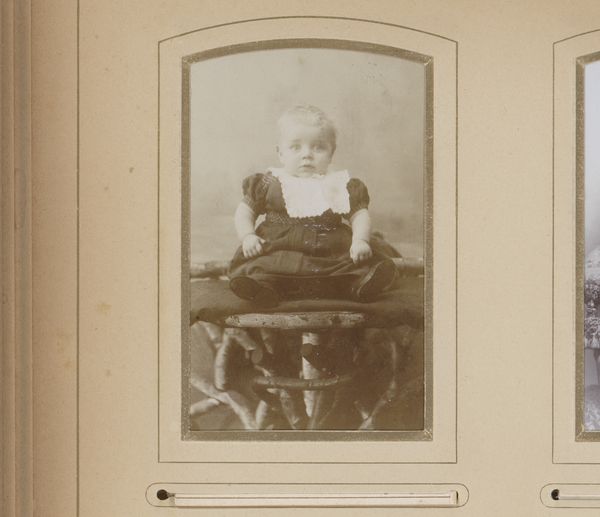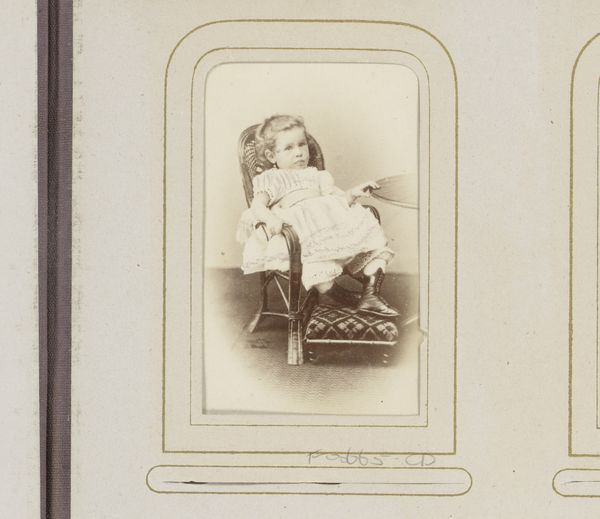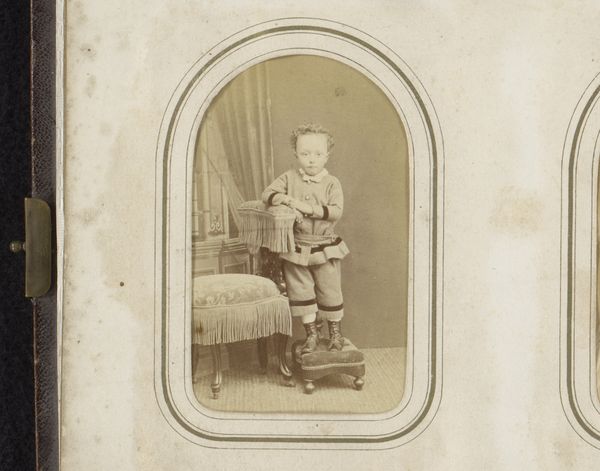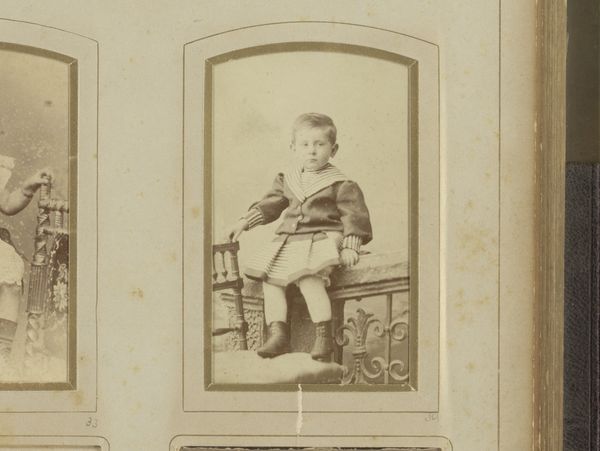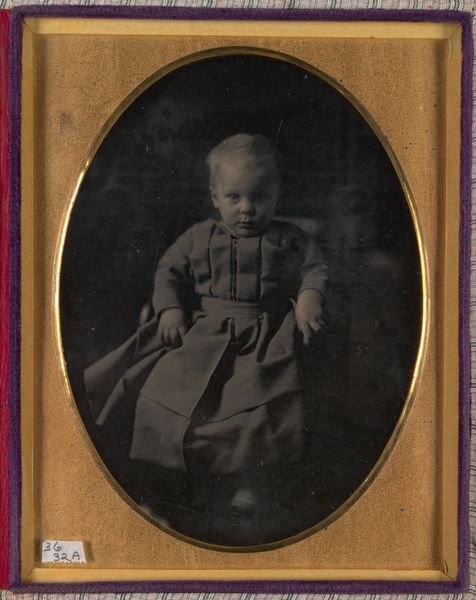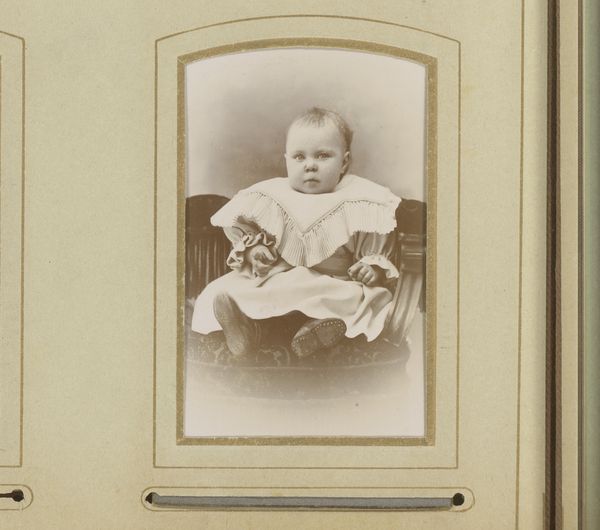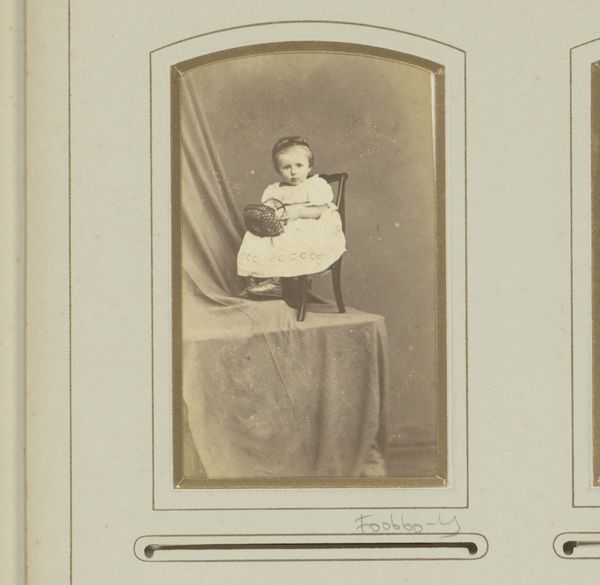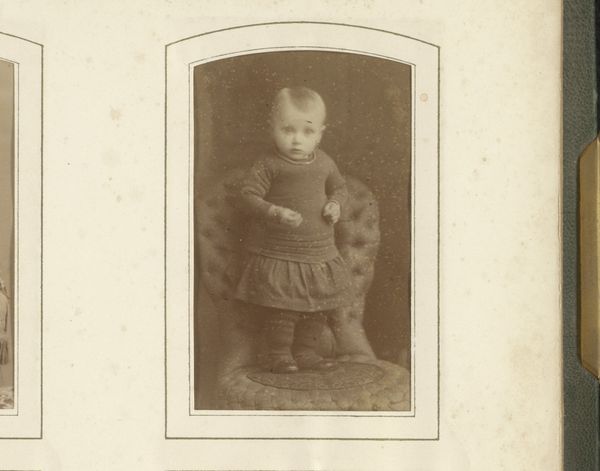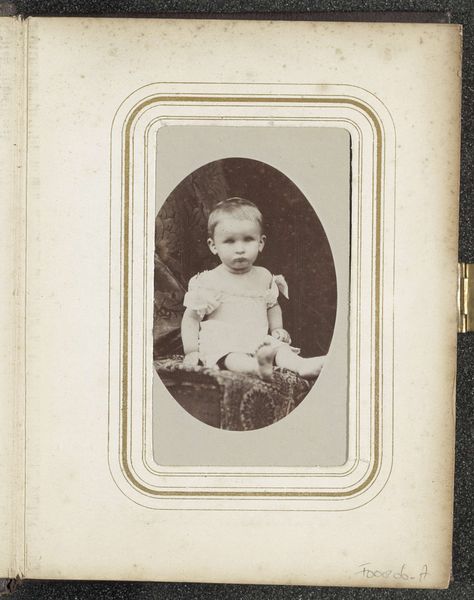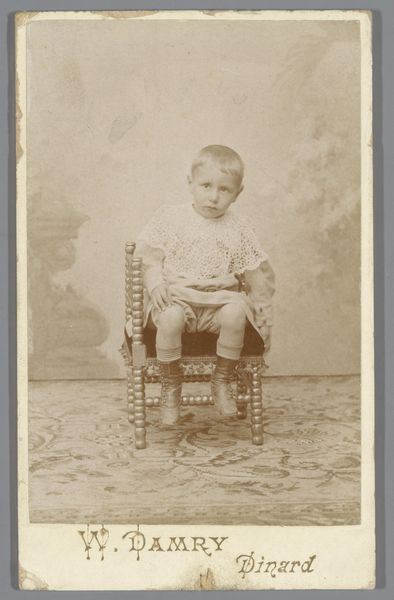
photography, gelatin-silver-print
#
portrait
#
photography
#
historical photography
#
gelatin-silver-print
#
19th century
Dimensions: height 82 mm, width 51 mm
Copyright: Rijks Museum: Open Domain
Editor: This gelatin silver print, "Portret van een zittende baby," made sometime between 1860 and 1900 by C.W. Breitengross, is surprisingly adorable. The way the baby clutches the side of that simple wooden chair… it feels so posed, so deliberately manufactured. What's your take on this, looking at it through a more critical lens? Curator: Well, focusing on the material aspects, notice the gelatin silver print itself. The photographic process at this time wasn't simple; it involved a lot of labor to create the necessary chemicals and coat the plates. Consider the socio-economic context – photography was becoming more accessible, but it was still a significant expense for many families. This image becomes a tangible record of a family's desire and ability to participate in a burgeoning visual culture, a marker of middle-class aspiration, don’t you think? Editor: That's interesting! I was so caught up in the image itself that I hadn't considered the labour and materials that went into producing it. It does change the reading of the portrait. Curator: Exactly. Also, think about the studio props – the chair, the clothing. They're carefully selected to project a certain image. These aren't just materials; they're carefully chosen signifiers in a system of social meaning. How does that staged quality sit with you? Editor: It feels almost… exploitative? Dressing the baby up, forcing them to sit still under bright lights... it highlights a power dynamic and perhaps how childhood itself was being shaped as a commodity. Curator: Precisely! The photograph itself becomes a commodity, reflecting broader consumer culture. By understanding its construction, its materiality, we start to see its connections to broader societal trends of the 19th century. Editor: I never would have thought of this photograph in terms of production and consumption. This approach opens up a whole new way to analyze it. Curator: It does, doesn't it? Focusing on materials can tell us so much more about our past, and its relationship to our present.
Comments
No comments
Be the first to comment and join the conversation on the ultimate creative platform.
